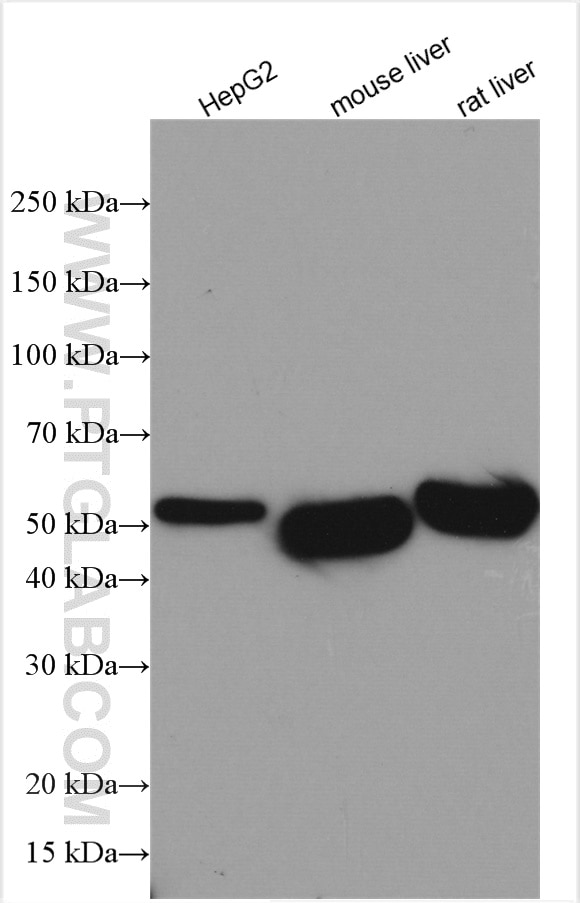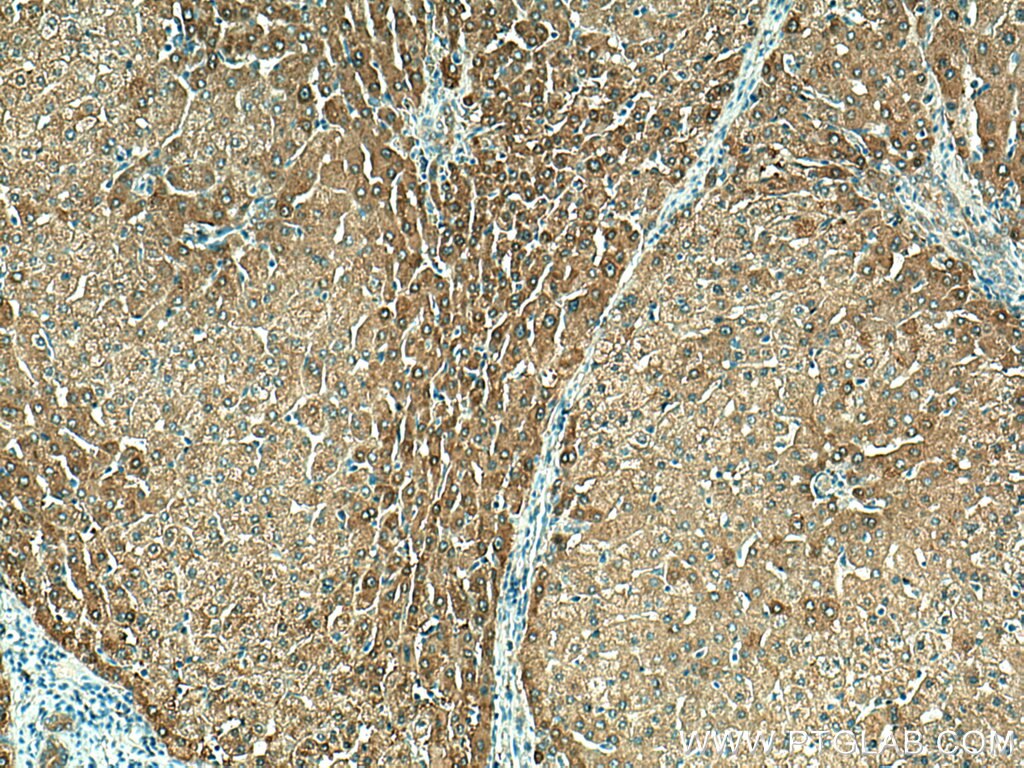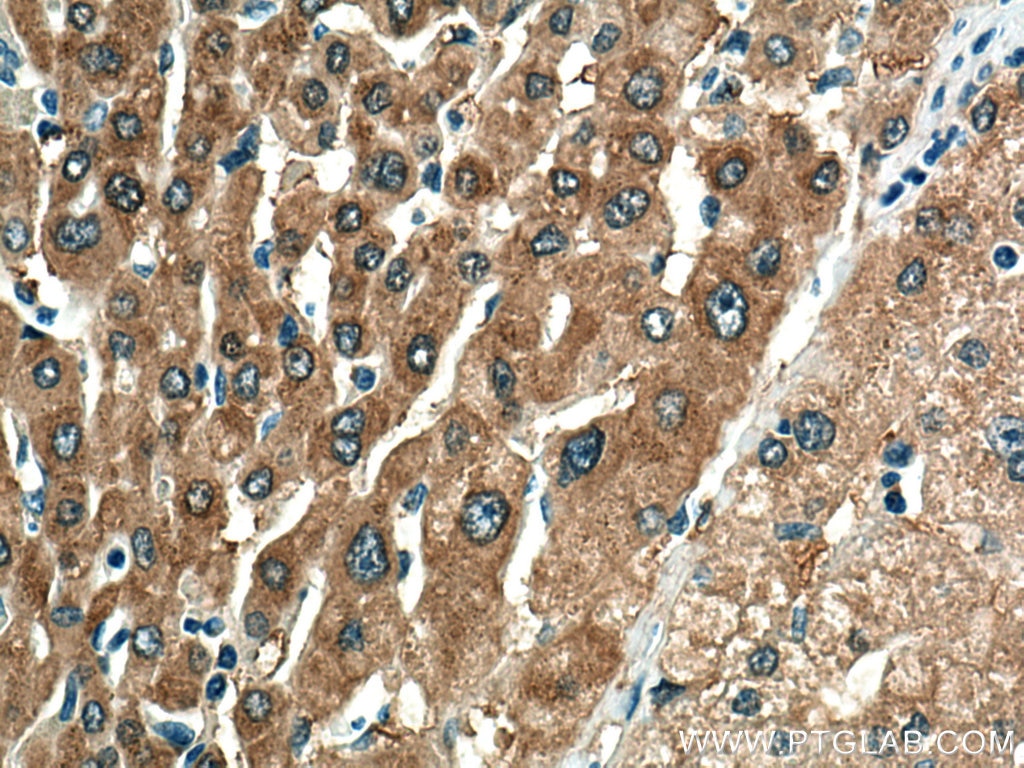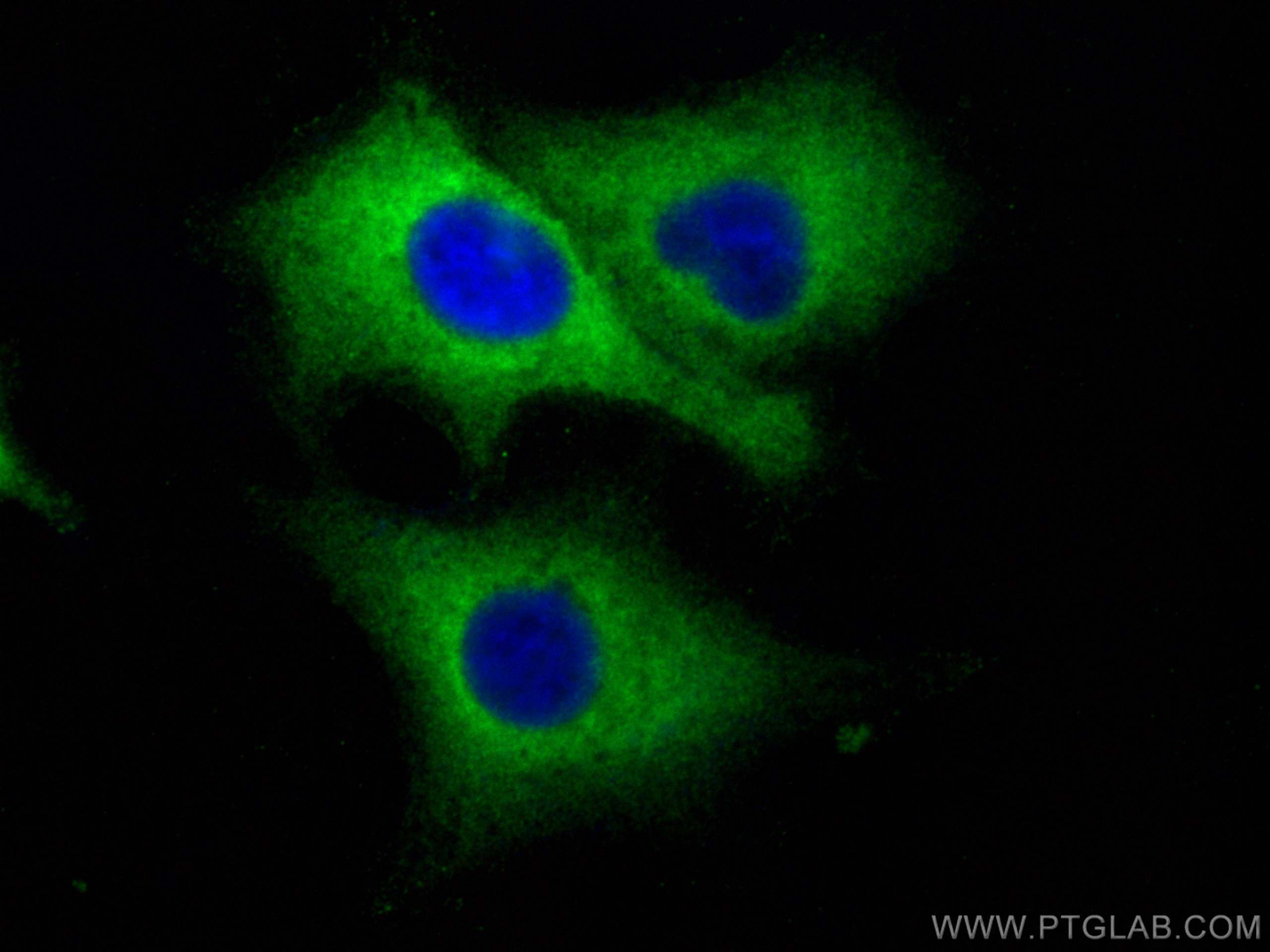- Phare
- Validé par KD/KO
Anticorps Polyclonal de lapin anti-ALDH1A3
ALDH1A3 Polyclonal Antibody for WB, IHC, IF/ICC, ELISA
Hôte / Isotype
Lapin / IgG
Réactivité testée
Humain, rat, souris et plus (1)
Applications
WB, IHC, IF/ICC, ELISA
Conjugaison
Non conjugué
N° de cat : 25167-1-AP
Synonymes
Galerie de données de validation
Applications testées
| Résultats positifs en WB | cellules HepG2, tissu hépatique de rat, tissu hépatique de souris |
| Résultats positifs en IHC | tissu hépatique humain, il est suggéré de démasquer l'antigène avec un tampon de TE buffer pH 9.0; (*) À défaut, 'le démasquage de l'antigène peut être 'effectué avec un tampon citrate pH 6,0. |
| Résultats positifs en IF/ICC | cellules A549, |
Dilution recommandée
| Application | Dilution |
|---|---|
| Western Blot (WB) | WB : 1:500-1:2000 |
| Immunohistochimie (IHC) | IHC : 1:50-1:500 |
| Immunofluorescence (IF)/ICC | IF/ICC : 1:200-1:800 |
| It is recommended that this reagent should be titrated in each testing system to obtain optimal results. | |
| Sample-dependent, check data in validation data gallery | |
Applications publiées
| KD/KO | See 1 publications below |
| WB | See 16 publications below |
| IHC | See 4 publications below |
| IF | See 2 publications below |
Informations sur le produit
25167-1-AP cible ALDH1A3 dans les applications de WB, IHC, IF/ICC, ELISA et montre une réactivité avec des échantillons Humain, rat, souris
| Réactivité | Humain, rat, souris |
| Réactivité citée | Chèvre, Humain, souris |
| Hôte / Isotype | Lapin / IgG |
| Clonalité | Polyclonal |
| Type | Anticorps |
| Immunogène | ALDH1A3 Protéine recombinante Ag18605 |
| Nom complet | aldehyde dehydrogenase 1 family, member A3 |
| Masse moléculaire calculée | 512 aa, 56 kDa |
| Poids moléculaire observé | 50 kDa |
| Numéro d’acquisition GenBank | BC069274 |
| Symbole du gène | ALDH1A3 |
| Identification du gène (NCBI) | 220 |
| Conjugaison | Non conjugué |
| Forme | Liquide |
| Méthode de purification | Purification par affinité contre l'antigène |
| Tampon de stockage | PBS with 0.02% sodium azide and 50% glycerol |
| Conditions de stockage | Stocker à -20°C. Stable pendant un an après l'expédition. L'aliquotage n'est pas nécessaire pour le stockage à -20oC Les 20ul contiennent 0,1% de BSA. |
Informations générales
Aldehyde dehydrogenase 1 family member A3 (ALDH1A3), is an aldehyde dehydrogenase enzyme that uses retinal as a substrate either in a free or a cellular retinol-binding protein form. ALDH1A3 plays a major role in the detoxification of aldehydes generated by alcohol metabolism and lipid peroxidation.ALDH1A3 is calculated to be 56 kDa.
Protocole
| Product Specific Protocols | |
|---|---|
| WB protocol for ALDH1A3 antibody 25167-1-AP | Download protocol |
| IHC protocol for ALDH1A3 antibody 25167-1-AP | Download protocol |
| IF protocol for ALDH1A3 antibody 25167-1-AP | Download protocol |
| Standard Protocols | |
|---|---|
| Click here to view our Standard Protocols |
Publications
| Species | Application | Title |
|---|---|---|
Nat Commun Decoding non-canonical mRNA decay by the endoplasmic-reticulum stress sensor IRE1α | ||
Cell Res Excessive UBE3A dosage impairs retinoic acid signaling and synaptic plasticity in autism spectrum disorders. | ||
Cell Chem Biol Lipid-derived electrophiles mediate the effects of chemotherapeutic topoisomerase I poisons. | ||
Mol Metab Autotaxin signaling facilitates β cell dedifferentiation and dysfunction induced by Sirtuin 3 deficiency. | ||
Free Radic Biol Med Flavonoid 4,4'-dimethoxychalcone suppresses cell proliferation via dehydrogenase inhibition and oxidative stress aggravation. |
Avis
The reviews below have been submitted by verified Proteintech customers who received an incentive for providing their feedback.
FH Azita (Verified Customer) (06-16-2021) | Immunocytochemistry labelling of (4% PFA) fixed mice spinal cord tissue by ALDH1A3 antibody at dilution of 1:100.
|





